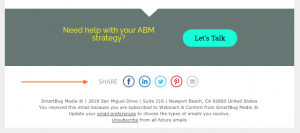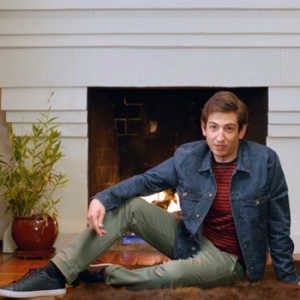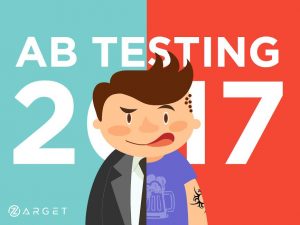PepsiCo’s head of gaming and esports shares his playbook for connecting with gamers and fans.
Marketers have never had more opportunities to break into in-game advertising, due to the growing number of users and the evolving technology for brand placements. PepsiCo has a vast portfolio of beverages and foods, and Paul Mascali, PepsiCo’s head of gaming and esports, has put together a multipronged marketing strategy to connect the right products with the right customers in the right game environments.
“In-game advertising is a highly-engaged instance,” said Mascali. “Attention is fully on the game and not passive, it’s a lived-in experience. The biggest thing is that it’s the right type of integration, and that’s why we’re working with premium publishers to maximize those eyeballs.”
Not every brand is a world-famous soft drink, however. Fortunately, there are many entry points for brands to tap into the highly-engaged gaming community.
Getting started with dynamic in-game advertising
One of the easiest low-cost ways to get started with in-game advertising is also one of the newest – dynamic in-game advertising.
Marketers don’t have to get in early when a video game is being developed in order to claim a spot for brand integration. Instead, game publishers create and sell inventory for advertisers after the game is released.
Think of all the advertising opportunities during a Formula One race or when you take a walk down a busy street in the real world. Well, in the virtual environment of a video game, those same billboards and car sponsorships can be made available to advertisers, and swapped in and out programmatically in real time.
“Dynamic in-game advertising is more of a turnkey solution for brands who don’t have a strong foothold in games, don’t have bigger budgets and haven’t really leaned in,” said Mascali. “It’s a good way to test the waters.”
This lets marketers new to gaming test and learn which game environments work best. And they don’t have to commit a lot of their ad budget or time, because adtech vendors like Anzu are making dynamic ads accessible across many game publishers.
Hard-coded in-game advertising
Brands with clout, and the budget to match, can get involved earlier in the development of a (hopefully) blockbuster game, creating a more integrated ad experience. A hard-coded in-game advertising placement means marketers collaborate closely with developers to make the brand an actual part of the game and not just a digital billboard.
In order to pull this off, marketers should already know some of the games and audiences that work for their product.
For instance, PepsiCo has had a long history in video game integrations, including the NBA 2K series developed by Visual Concepts and played on top consoles, PC and mobile.
In the NBA 2K22 update for the most recent basketball season, the game included the branded GatoradeTraining Facility. Far more than a fleeting ad during gameplay, players could go to this part of the game and consume drinks with their player avatars, thus improving their player’s performance level.
Cross-promotions in-game and on other channels
A popular game’s devoted audience will interact with other audiences, amplifying brand marketing.
That’s why Mascali’s team jumped on the opportunity to create The Dew Court in the NBA 2K game. It is modeled on the real-world three-point contest during the NBA’s All-Star Weekend, which is sponsored by PepsiCo’s MTN DEW.
Having the branded experience consistent between the actual sporting event and the in-game experience adds to the realism of the game for players. And it adds to the brand exposure for PepsiCo. In the game, players shoot three-pointers on the Dew Court and can earn in-game rewards, adding higher stakes and more perks for players.
Similarly, NBA 2K22 also included the 4-Point Ridge Tournament. This experience replicated the Ruffles “four-point line” from the celebrity game at All-Star Weekend. Ruffles is another PepsiCo brand.
“From our experience, hardcoding is more customized and dials deep into why these consumers play and how we can be additive to their experience,” said Mascali.
Growing e-commerce through games
Traditional retail channels for brands have been disrupted by e-commerce. Consumer packaged goods companies like PepsiCo have adapted by launching their own direct-to-consumer offerings.
When the company launched their first owned portal for a beverage in 2020, gaming was an integral part of the strategy, and continues to be. MTN DEW Game Fuel is a line of beverages designed for gamers. Some flavors are tied to specific games, such as Activision’s Call of Duty Warzone.
Instead of having to run off to the local 7-Eleven, gamers can go to the Game Fuel portal and order drinks. They can also earn rewards through purchasing drinks and other products, making Game Fuel a loyalty program and D2C play.
Game Fuel has also partnered with the Atlanta Faze esports team, bringing exposure to fans who follow esports online and watch broadcasts of league tournaments.
Gaming influencers get deeper in the community
Another of the company’s beverage brands, Rockstar Energy Drink, recently announced a multiyear partnership with gaming organization NRG.
NRG is a leader in gaming lifestyle content shown on YouTube, Twitch and other video and social hubs where gamers and esports fans can watch masters display their skills on Fortnite, Valorant and other popular game franchises. To give an idea of the scale, NRG-owned channels, which feature top esport figures, have 50 million monthly active users.
The first marketing initiative is a sponsored livestream music experience called SOUND SERIES.
“From our standpoint, these guys and girls are modern day celebrities for this generation,” said Mascali. “With the engagement they get, when we find the right influencer-brand fit, it’s great for us and their communities. When we find the right brand fit, we have them talk about them, and that becomes a powerful marketing avenue for us.”
According to Mascali, every game has its own culture and its own community. Top influencers know these communities the best, so it’s about giving them the creative independence to carry through brand values and enthusiasm to their audience.
Marketers should have a firm grasp of these brand values before approaching game developers, publishers or influencers. Once they do, marketers have a wide array of options to get in quick, say through dynamic in-game ads, or take a more studied and integrated approach through hard-coding, cross-promotion, influencers and e-commerce plays.
The post PepsiCo’s strategies for marketing via online games and esports appeared first on MarTech.
MarTech(26)
Report Post







